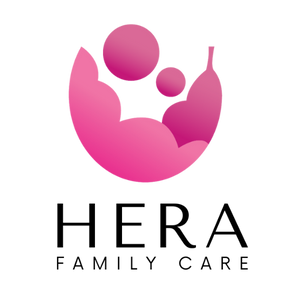
5 Steps to Financially Prepare for Parenthood by Aunjane Johnson
Here are some helpful tips on preparing for a baby

Collaboration with Roula Matzourogianni Midwife, MSc
Stages and mechanism of labour
At Hera Family Care we support women and families during pregnancy, childbirth and postpartum.
It is important at the time of birth to be prepared, knowing what is happening in your body to recognize the possible signs of labour.
Signs of the onset of labour are as defined as “possible” because, just as every woman is special, every birth is different and the signs may vary.
Latent phase from 1-4 cm Dilatation
The early stage of labour or latent phase is usually diagnosed by the following signs:
This is defined as a cervical plug which during pregnancy covers the cervical orifice, also known as a “bloody show”.
“The waters break.” Rupture of membranes can also occur at a later stage of labour, and it is not necessary to occur in order for labour to start.
They are usually described as cramps similar to those of a period accompanied with tightness in the abdomen and uterus. In the early stage of labour contractions are sporadic and have a short duration.
The early stage or latent phase can last from a few hours to a few days. This stage of labour is very important because during this stage the cervix is preparing, softening and loosening to go into the active first stage of childbirth.
Active Labour
First Stage of Labour from 4-10 cm dilatation
In the active stage of labour the cervix dilates with the help of frequent, intense and longer lasting contractions. At this stage, rupture of membranes is also possible if this has not occurred in the latent phase.
During labour, a certain degree of adaptation or entry of the head of the fetus to the different levels of the pelvis is necessary in order for the birth to progress. This is achieved through successive movements of the fetus inside the genital tract which belong to what we call the mechanism of labour.
Second stage of labour from 10cm until the baby is born
As soon as the cervix and body are ready, labour passes into the transitional stage known as the second stage of labour.
It is the transition from the dilation of the cervix to the descent of the baby that gradually leads to the birth of the baby. At this stage usually the contractions change and some women have the intense need to push during contractions. Usually emotions change at this stage and it is important to trust and listen to your body. The transition stage is completed with the birth and arrival of your baby.
Pro pushing tip: Listen to you body. Remember the feeling when you need to go for a poo, sometimes you can wait and sometimes it’s “oh my gosh I need to go now!” That is the feeling you will have when your baby is coming out! That’s when you push!
Third stage of labour; the birth of the placenta
The third stage of labour begins after the birth of the baby where the uterus contracts resulting in the birth of the placenta. During this stage, breastfeeding and/or skin-to-skin contact with your baby is encouraged.
After the birth of the baby, the placenta must also be born. There are two ways either with pharmaceutical assistance which is the “active” method where by administering some external hormones, such as synthetic oxytocin or syntometrine, birth attendants help encourage the contraction of the uterus and the placenta to be born. Oftentimes they may use a method called controlled cord traction or CCT by which they apply a light pulling motion to the cord to assist the birth of the placenta.
Another method is the physiological or natural method of waiting for the placenta to come out on its own and the woman pushes it herself. Breastfeeding helps a lot in this as it causes the natural secretion of oxytocin from the body which in turn helps the uterus to contract.
There are advantages of both methods. The active method is usually shorter and evidence suggests that it helps to avoid bleeding, however, it does not cease to be an intervention. The physiological method is less intrusive but especially in high-risk pregnancies it can increase the likelihood of bleeding. Also, it usually lasts longer.
At Hera Family Care’s childbirth preparation courses we will see how the mechanism works and how movement and alternation of postures during childbirth can contribute to its outcome.

Here are some helpful tips on preparing for a baby

Menopause is a natural biological process that marks the completion
Stay in touch with us for more articles and publications.
© All rights reserved by Hera Family Care. Designed and Developed by Cybeem Technologies
